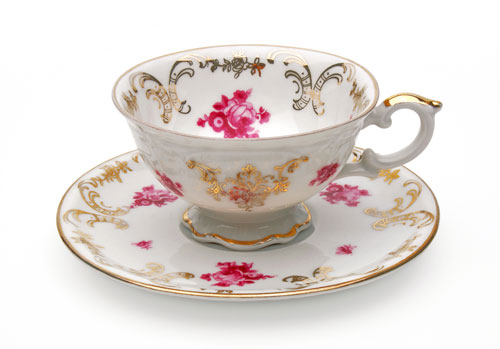In a passionate collector’s minds, there is no finiteness to collecting; not a compulsive obsession as people are wont to say, but civilised passion playing out and preserving art and heritage, writes Nagesh Alai
Who has not heard about the beautiful black and white corvid, magpie, an intelligent and social bird? It is both liked and disliked for its hoary association with good luck and bad luck and spirituality and superstitions; folklores about it abound. Its supposed proclivity to pick up or put away shiny objects is a notoriously misplaced belief, but has given rise to metaphors like “ collecting like a magpie”. Some may remember the English nursery rhyme, a sort of hosannah for the magpies, that goes, “One for sorrow, two for joy, three for a girl, four for a boy, five for silver, six for gold……..ten for a bird, you must not miss.”
Hunting-gathering and farming is closely linked to the homo sapiens’ evolution and collecting is but an extension of that process. While hunting-gathering-farming was primarily about survival and food on the table, with trade and commerce subsequently adding different dimensions to it over time, collecting is all about relating to the finer sensory aspects that nature has bestowed on us, expressed in the form of fine art and craft, thanks to human culture and creativity.
Any average person is a collector of sorts – of something or the other, lesser or greater. After all, in practice, life is not just about needs, but wants as well. Understanding collectors is tough since several factors and psychology are at play. Ask a collector why she or he does it and she or he will take you on a spin of emotions and joys that may leave you overwhelmed or bewildered or excited in equal measures. In a passionate collector’s mind, there is no finiteness to collecting; not a compulsive obsession as people are wont to say, but civilised passion playing out and preserving art and heritage.

I recall my own journey, since childhood to now, in an inveterate journey of collecting everything under the sun, prodded and propelled by child-like curiosity and enthusiasm which has continued unabated till now, even as I write this. Playing cards, colourful bottle caps, match box covers, cricketers’ photos and albums, stamps, numismatic coins and notes, comic books, pens, paintings and sculptures, silver, old furniture, miniatures, antiquarian books, ceramics, paan-dhaan, gunpowder containers, netsukes, jades, coral, jewellery, conches and shells, textiles – I have seen and collected them all in an exciting and enthusing journey since my teens. I am sure there are several thousand like me in every nook and corner of our wonderful country of a rich heritage and everywhere else in a connected world; art is beyond borders after all. Of course, you also have the super rich who are into vintage cars and heritage castles and other unimaginable collectibles. There are collectors known to collect fossils and bones of extinct animals. There are collectors of film posters, old milestone newspapers, chess sets. To each his own interests and likings, I would say, for the pleasures of collecting are uniquely personal and enriching.
While the excitement of collecting can be unabated, there would be a point in time when it could be overwhelming and extraordinarily difficult to maintain and add to the collections. Collecting requires, not just a steady cash inflow, but also a mindset of effective cataloguing. Very few collectors are adept at it, rather most are insouciant. Art is also susceptible to theft and damage. I recall my Echolac fibreglass handbag with 3 lovely miniatures getting stolen from my car, nearly thirty years ago. While it had to do with my careless driver, it was destined to happen perhaps. Of course, I was distraught, at not just the loss of the beautiful two hundred years old paintings , but also the significant money that had gone into buying them. A police complaint was hardly of any help, except for the rounds of the police station. Another incident was the damage caused by termites to my significant collection of Development Oriented Commemorative coins, in their original cases, issued by RBI. I could do little about it, except stoically accept the misfortune.
A question which will not go away is what happens to your collections, if your family members are not interested in them. Collections, over a period, tend to gain in economic value, given the rarity and irreplaceability factors, and could be quite a tidy sum. Should the meticulous and expensive collection be allowed to go to waste, as has happened in several cases, with the heirs not knowing what to do with them and selling them off for peanuts.



I was at a soiree a few days ago, hosted by a good friend who also happens to be a well-regarded gallerist. Amid the eclectic mix of guests from the business and the corporate and the society world, there were a few close collector friends as well. One of them, a collector of vintage cars and clocks, was lamenting the fact that his children are not interested in his collections and he is wondering what to do with his humongous collection, assiduously built and cared for over the years. I could not help cheekily telling him, ‘welcome to the real world’. Essentially, his children are living abroad and well placed in life and have no interest in his collection or the passion and time for it. They have suggested to him to sell off his collection over a period of time and leave cash behind. At one level, a very practical and blunt suggestion, and at another level, unemotional and unempathetic. I could sense the disappointment and hurt in my friend.
He was facing his moment of truth and it resonated with me. Frankly, I too am grappling with it myself. While my family loves and appreciates my small, but diverse collection, some of them on my walls and some in showcases, none of them are interested in looking after it or wanting to get involved with it. They too have suggested that I ‘get rid’ of my collection and go liquid or do whatever else that I wish. Not exactly music to my ears, a collector who has been led by the heart in putting them together over decades.
As a novice student of Vedanta and spirituality, the underpinning meaning of these beautiful words are not lost on me – “क्या तू लेके आया है क्या तू लेके जायेगा , तूने तो कमाया है वो दूसरा ही खायेगा, खाली हाथ आया है खाली हाथ जायेगा”
A belated realisation of the moment of this truth has seen several estate sales and auction sales. It is a good thing to happen, given that art becomes a conversation with the newer and next-gen collectors who in turn will encourage and give the artisans a reason to live and sustain their skills. Many art and art forms are dying out due to the lack of support and absence of art conversations and platforms. One of the responsibilities of conscious citizens is to nurture and support art, as was being regularly done in the past, but sadly scantily now. Every collector has a role to play in that.
Truism and poignancy apart, there need be no disenchantment with collecting. Collectors also, in their own way, promote and preserve art and heritage for the future generations to understand and appreciate the ancestral cultures and histories and stories that make living enriching and meaningful. Imagine what the world would have been without fantastic museums like the Salar Jung Museum or Tate’s or Fricks or Guggenheim and so many others, private and public across states and countries. All of these started off as personal collections, eventually getting housed in permanent museums. Love your collection, but stay detached – for life is not worthy without either. “One for sorrow, two for joy” it may be for magpies, but for the art magpies, it could as well be “One for joy, two for sorrow”, a moment of truth.








